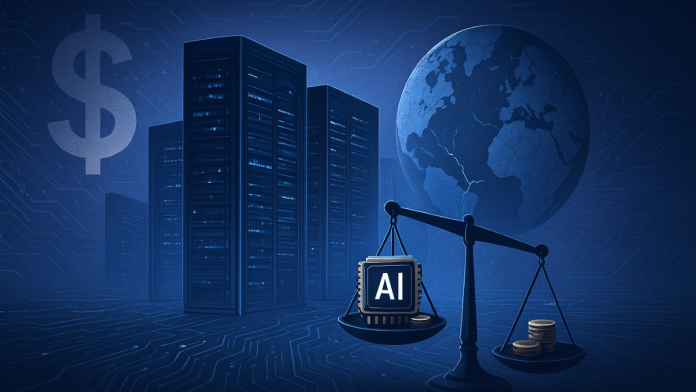The world of artificial intelligence (AI) is growing fast, but according to a new report by J.P. Morgan, the financial reality behind this boom is staggering. The report says that to earn just a 10% return on all the money being poured into Artificial Intelligence development by 2030, the industry would need to make $650 billion every year.
To put that number into perspective, that’s like asking every active iPhone user across the globe to pay around $35 each year, or every Netflix subscriber to pay about $180 every year — forever.
These figures are not actual prices being charged, but rather a way to help people understand how enormous the financial expectations around AI really are. It shows that while tech companies are racing to build powerful Artificial Intelligence systems, the economic side of the story is much more complex.
Today, there are about 1.5 billion iPhone users and over 300 million paid Netflix subscribers worldwide. Even though AI’s costs and revenues are shared among individuals, companies, and governments, these estimates reveal how massive the challenge is to make the AI industry truly profitable.
J.P. Morgan warns of possible slowdown
J.P. Morgan’s analysts noted that the growth of Artificial Intelligence won’t always go “up and to the right.” They compared the situation to what happened with the telecom industry during its early days, especially when companies built huge fibre networks across countries. Back then, businesses invested billions expecting quick profits, but the actual revenues didn’t come as fast as predicted.
The same thing could happen with Artificial Intelligence. Companies are currently spending huge sums to create AI data centres, chips, and software models, but it might take years before these investments pay off. The report fears a scenario where big tech firms keep investing in AI infrastructure, yet the income doesn’t arrive fast enough to justify the spending.
Even though leading AI companies are already earning billions in annual revenue, many of them are still not profitable.
Overcapacity risks and a repeat of the past
Another major concern is overcapacity — the idea that the world could end up building far more AI computing infrastructure than is needed. This would mean that enormous, expensive data centres might sit idle if demand doesn’t grow as expected.
This isn’t just a minor issue. Each advanced AI data centre can cost billions of dollars to construct and maintain. If businesses and consumers don’t adopt Artificial Intelligence services at the predicted rate, these centres could become underused assets, leading to big financial losses.
If the balance between investment and demand is not maintained, it could lead to a financial bubble, where expectations are far higher than what the market can deliver.
China stuns the internet — influencers must now show degrees to talk about health, law, or finance
A high-stakes race with winners and losers
Despite the concerns, J.P. Morgan’s report acknowledged that Artificial Intelligence will still produce major winners — companies that manage to use technology efficiently and attract strong user demand. But it also warned that there could be equally large failures, even among some of today’s most promising players.
The sheer amount of money being invested in AI makes this a high-stakes race. Billions of dollars are being funnelled into developing smarter models, more efficient chips, and faster cloud services. But if the market doesn’t mature fast enough, even the biggest companies might struggle to maintain profitability.
The report also noted that many firms outside the AI industry could still feel the effects if things go wrong. That’s because the AI boom is tightly connected to stock markets and corporate spending across the tech world. If the industry faces a slowdown or correction, it could potentially affect trillions in market value globally.
In short, while AI continues to transform industries and capture imaginations worldwide, its economic foundations remain uncertain. The enormous costs, possible overcapacity, and unclear path to profit all show that the future of AI may be just as challenging as it is exciting.


